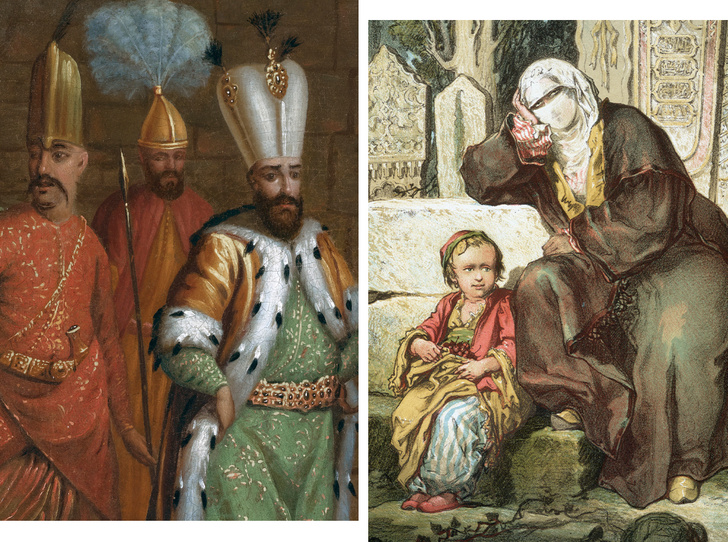The traditions of the times of the Ottoman Empire are nowadays most often a source of bewilderment and disgust. We tell you what is wrong with them.
The Sultan’s Harem
In the Ottoman Empire, men from powerful dynasties were especially honored because they were potential rulers of states. Even more privileges were at the acting sultan: in his use came a harem, where there were taught the art of seduction concubines, who did not stop the process of self-education for many decades.
In the harem of Sultan Suleiman I had 167 girls, his son Selim II — 73. Of this solid number in the chambers of the sultan got only a few, which carefully selected the mother of the lord — Valide Sultan. Girls deprived of the happy opportunity to get to the salvet — intimate privacy with the sultan — and forced to live in love loneliness, could leave the palace and marry only if for nine years the lord never once took this concubine at his side.
Castration and swarthy skin color to serve in the palace
In the palace where the sultan’s harem was kept, eunuchs played no small role in organizing order. They were honored to personally carry out the orders of the lord and the sultans. A man who had undergone the rite of castration became a eunuch: only the lack of physical ability to have sexual intercourse with a woman could be a confirmation that a male was allowed to be in the harem.
In addition to castration, additional precautions were envisaged: only dark-skinned men served in the harem. If a concubine became pregnant by a eunuch (there was no chance of this, but there were fears), the child’s swarthy skin could be used to determine that it was illegitimate.
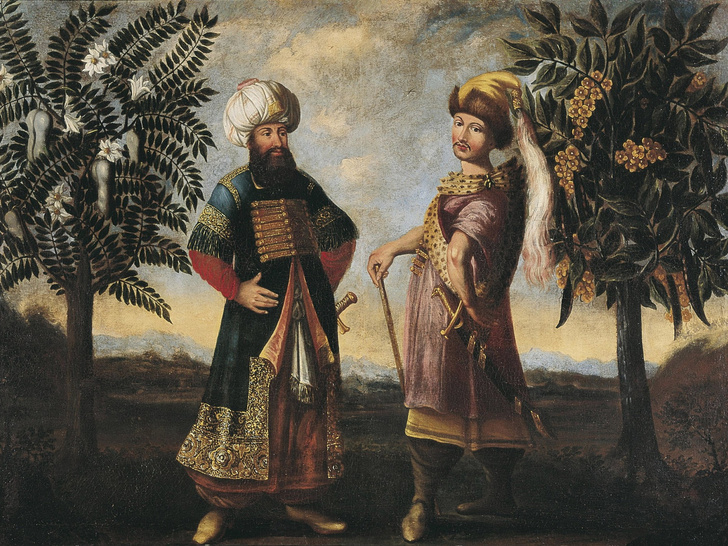
Marriages with children
Today, marriages contracted between people who have barely reached the age of 18 provoke a flood of condemnation in society. And in the Ottoman Empire, 18 was already a late age for a girl to marry.
Hatice Sultan, daughter of Selim I, was given in marriage when she turned 13. Her first husband lived his childhood years at the still young Bayezid II — the grandfather of the future Ottoman princess, so it is easy to guess that the age difference between the spouses was large. The powerful ruler Kesem Sultan gave her six-year-old daughter Ayshe Sultan in marriage to the old man Nasuh Pasha, and four-year-old Gevherhan Sultan — to a 55-year-old man.
Even the fact that elderly husbands could only become intimate with the children they married after they were at least 12 years old does not make this custom any less savage.
Beating with a whip or stick
Before being taken by the sultan, concubines in his harem had to learn oriental dances, know the Turkish language perfectly and learn other languages, and have impeccable writing and reading skills. Young girls tried to train under the model of the ideal future favorite of the lord of the empire. However, it was not without exceptions to the rules.
Concubines were physically punished for their faults (for example, for fighting, sabotage), as violence was considered the most effective method of education. Guilty girls were forced to endure whip stripes or blows with a wooden stick on their legs, which could later cause joint problems.
Nevertheless, it was easier for concubines to endure painful punishments than to be banished from the sultan’s palace without means of subsistence.
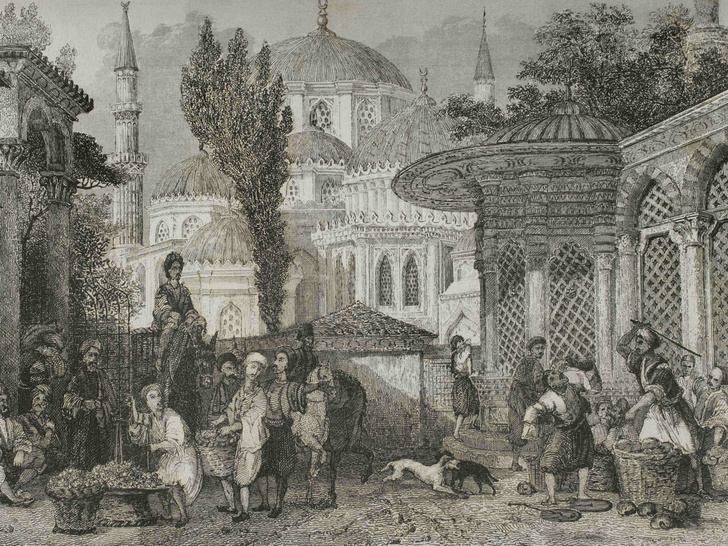
Motherhood at the age of 12
Because of early marriage, girls in the Ottoman Empire did not delay in having children. This was especially true for those who represented the Ottoman dynasty: the sultan needed as many heirs to the throne as possible because of the prevailing smallpox in those days, which quickly deprived the lord of his shehzade (the title of the sultan’s sons). In addition, the sultan’s sisters were required to become pregnant as soon as they began their marriage in order to make the marriage between their child and a member of another powerful dynasty quicker. This helped to improve relations between the countries from which the married dynastic descendants came.
According to the surviving records from the harem, the youngest mother was Gulbahar-khatun — aka the grandmother of Suleiman the Magnificent. Khatun gave birth to her firstborn son, Selim I, at the age of 12.
Sultan’s permission to marry and divorce
In the TV series «The Magnificent Century» in one of the episodes, Mihrimah Sultan, daughter of Sultan Suleiman I, twice says the word «divorce» and eventually goes to her father for permission to divorce. This historical fact was not distorted in the TV series: in reality, the female relatives of the sultan did apply to the lord for permission to marry or divorce.
Sometimes the opinion of women was not even taken into account: the sultan could marry off his own sister, daughter or niece to a man who would be useful to him in a public office. More often the future spouse was a prince from the lands necessary to the lord for international cooperation and strengthening the foreign policy of the empire.
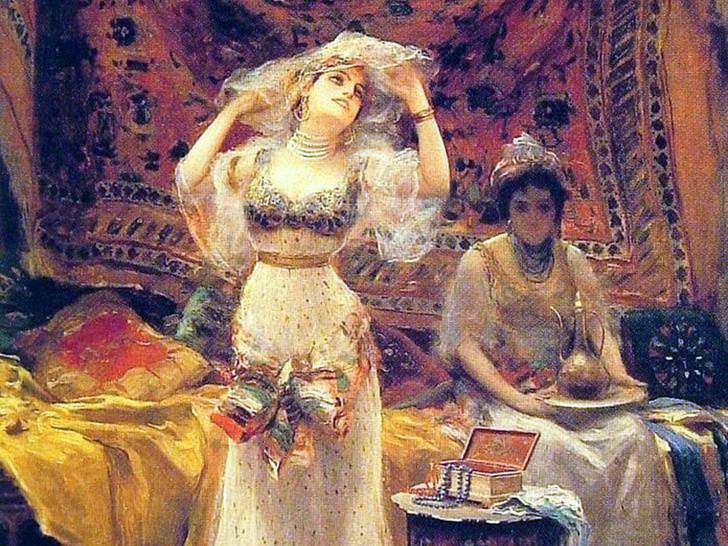
Life in a cage
Selim II was the first to dare to violate the Fatih law, according to which a potential heir to the throne had the right to kill his brothers to avoid competition in the struggle for power. The sultan offered an alternative to encouraging fratricide: shehzadehs who were left without the throne could continue to live, but only in a cage. The failed sultans were cut off from civilization for most of their lives. At least until the death of the ruling sultan.
The shehzadehs were then given a strange privilege: a few concubines with their uterus and ovaries removed (to prevent the birth of new heirs) to brighten their bland caged existence.
Most often in such savage conditions shehzadehs either went mad, or after release voluntarily went into asceticism and no longer interested in the affairs of the state.
Payment of taxes by children
In the Ottoman Empire there was a custom called «Devshirme» (or «Blood Tax»). It dates back to the reign of Murad I and consisted in the obligation of the Turks to collect tribute from the population every three years in the form of boys between the ages of eight and 18. The selected children were forcibly circumcised, converted to Islam and taken away to serve the Sultan. This fate could be avoided only if the male child was the only son in a Christian family.
There were two reasons for this custom. First, the prohibition in the laws of Islam on the slavery of Muslims. Secondly, the desire of the sultans to surround themselves with their own powerful army, created from the pupils of elite schools.
On the one hand, parents had to endure the separation from their child because of their debt to the empire. On the other hand, the children chosen by the Turks were given the opportunity to escape from the village, to receive a decent education and in the long run to take a solid position in the civil service. They often became Janissaries, which were the regular troops of the Ottoman Empire.
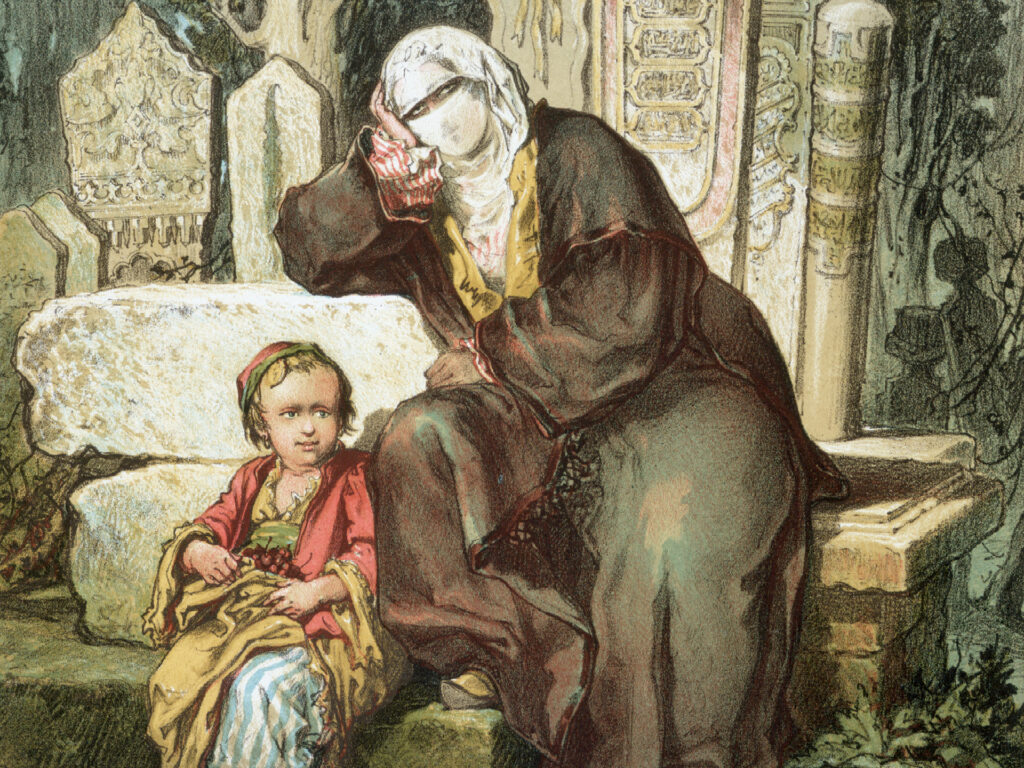
Discrimination against concubines who gave birth to daughters
Every ruling sultan was in dire need of a large number of sons in order to further choose which of the most worthy heirs to pass the throne to. But there were also «mishaps» in the form of birth of daughters.
The girls who gave the sultan a shehzade entered a new stage in the social system: they changed their status from «khatun» to «sultan». In the case of giving birth to daughters, such a transition could not take place. Moreover, these concubines of the lord did not receive a large number of gifts from him and the Valide Sultan, but still had their own private quarters and servants. Their chances of becoming from a concubine to a favorite and even less to become a legitimate wife of the sultan were greatly reduced.
In history there were concubines who gave birth to daughters to the sultan and at the same time did not lose his interest because of the temporary absence of an heir. For example, Nurbanu Sultan first gave birth to Selim II three daughters, and after — the future Sultan Murad III.
Genital burning
During the reign of Suleiman the Magnificent, prostitution flourished in the state. Women who provide intimate services for money are condemned even today, but in the Ottoman Empire they had to endure physical abuse.
The horrifying story of the punishment of prostitutes, which was used by Lutfi Pasha, is well known. Muslim customs did not allow such willfulness in a woman’s behavior — this is what guided the Pasha when he ordered the burning of the genitals of prostitutes. In his opinion, a woman who sells her body should receive an appropriate, defamatory stigma.
Shah Sultan, Lutfi Pasha’s wife, demanded from her husband an explanation for his horrible prank, and he raised his hand against her in the course of the scandal. Thus Lutfi Pasha lost his wife, deprived himself of the position of grand vizier and was forced to live out the rest of his days in exile.
Every ruling sultan was in dire need of a large number of sons in order to choose which of the most worthy heirs could be handed over the throne. But there were also «mishaps» in the form of birth of daughters.
Girls who gave the sultan a shehzade were entering a new stage in the social system: they changed their status from «Khatun» to «Sultan». In the case of giving birth to daughters, such a transition could not take place. Moreover, these concubines of the lord did not receive a large number of gifts from him and the Valide Sultan, but still had their own private quarters and servants. Their chances of becoming from a concubine to a favorite and even less to become a legitimate wife of the sultan were greatly reduced.
In history there were concubines who gave birth to daughters to the sultan and at the same time did not lose his interest because of the temporary absence of an heir. For example, Nurbanu Sultan first gave birth to Selim II three daughters, and after — the future Sultan Murad III.
